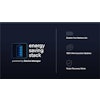
Technology is driving changes in consumer behaviors that are undeniable. One needs only to look at the Amazon Effect to see how quickly a new market entrant can irreversibly impact the entire go-to-market strategies of entrenched market incumbents. Today, waiting one week for an item to arrive is no longer acceptable. Overnight delivery is the new norm and two-day delivery is on the envelop of acceptable. What once was above and beyond is now commonplace. It really all started with Fred Smith of Federal Express. The challenge to the supply chain is obvious.
The one common thread that FedEx and Amazon have is their belief in using technology to create a differentiated value proposition and a trusted customer engagement. As a result, companies are adopting new technology at a breakneck pace. Gartner expects cloud adoption to hit $250 billion this year and the worldwide software as a service (SaaS) market is growing by 20.2 percent. The common thread? The use of technology to drive greater supply chain performance and a superior customer experience.
New technology shouldn’t be viewed as only a competitive edge. A Georgia Institute of Technology study noted that less than 30 percent of warehouses were considered efficient. Too many facilities had higher than average fulfillment errors, higher costs per line item pick, and the increased complexity of smaller orders was challenging their infrastructure and space to profitably proper a superior customer experience. Here are three ways implementing new technologies will help your supply chain meet the demands of the changing landscape:
1. Increase Cost Effectiveness with Voice
Voice-enabled warehouses decrease the amount of money spent on manpower and operating costs. Voice solutions can be applied to all processes and departments–workflows from receiving to shipping; put away to picking; inventory control to returns–and increase accuracy, productivity and safety at the same time. Voice systems require no modification to your warehouse management system (WMS) and have quick install and training times. Fast and easy install and training requirements are especially important due to the dramatic increase in businesses using day laborers, especially in the grocery market distribution centers. Being able to quickly train day laborers decreases the time spent on the training floor and increases productivity. It is best to look for a best in class voice solution that your WMS provider does not “own” the interface, so you have the future flexibility, without requiring your WMS provider assistance. Independence is key for your future.
2. Invest in Optimized Processes
Speed and accuracy go hand-in-hand when it comes to warehouse efficiency. It doesn’t matter if you’re picking times improve if it drives up your fulfillment errors and vice versa. Companies need to invest in technology that optimize processes, while improving accuracy.
Take full advantage of the opportunity to review and challenge your processes when you are looking to implement new technology. If you simply configure your existing processes with new technology, save your money. You really will not obtain much different results and measureable performance outcomes. Challenge your team and yourself to optimize processes using best-in-class processes proven at many of your peers.
3. IT is Too Busy. A Fact of Life.
I do not think I have ever visited a customer that has an internal information technology (IT) team excited to add another project to their list. After all, they are already overwhelmed with too much work and a reduced team. This is one of the main reasons the hosted or SaaS solutions are gaining so much momentum.
Hosting your WMS in the cloud provides flexibility and gives your business the ability to run efficiently in today’s complicated and ever changing industry, without adding the burden to your internal IT team’s plate.
Now more than ever, it is important to be mindful of the big picture and to invest in solutions that give your business the ability to utilize cost effective measures to bring your business greater operating efficiencies and a more pleasing customer experience.


















